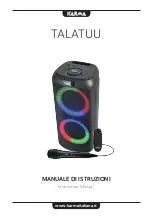
Page 16
Copyright © 2005 - ASR Electronics. All rights reserved.
Finalising the work to the head unit:
OK, at this point the PCB(s) should be mounted in the base unit with hot-melt, and all the connections
between the base unit PCB and the modification PCB should be done, we now need to insert the socket
pins into the receptacle we epoxied to the original connector block. Note carefully that we’re only interested
in the top row – the dual row receptacle has been chosen purely for the physical spacing provided by the
bottom row, it serves no other purpose. DON’T INSERT THE PINS INTO THE BOTTOM ROW!! ONCE
LOCKED IN IT’S ALMOST IMPOSSIBLE TO REMOVE THEM WITHOUT DAMAGE.
Refer to the following photos to assist in identifying which pin goes where. When doing this, in cases where
there are multiple pins in a common cable, don’t insert any single pin fully. Insert all pins from the bunch just
a couple of mm, and then slide each of them in a little at a time. Also make certain that you’re inserting the
pins the right way up – have a close look, there is a little bent-up “tang” on one side of each pin – this locks
the pin into the receptacle via the little slot seen in the top of the receptacle body. When pushing the pin into
the receptacle, avoid using a sharp metal tool such as a jeweller’s screwdriver as this can weaken the wire
at the connection point and it may break. I use a wooden toothpick – it has a nice pointed end, but won’t
damage anything.
This shot shows the buffer PCB channel output pins
partially inserted. From here they should be worked in
a millimetre or so each at a time, until the pins are fully
inserted. When they’re in all the way, you can hear a
distinct “click” when the tang on the pin springs up into
its corresponding locking slot. Also look carefully when
you’re done to make certain all the pins are locked in
properly.
Nominating the leftmost pin as number 1 (as viewed above), the connection scheme is as follows….
(colours shown in parentheses are for alternate output cable connection)
Pin 1
- Line out Front LEFT
- White (blue)
Pin 7
- No Connection
Pin 2
- Line out Front RIGHT - Red (red)
Pin 8 - Aux LED
- Yellow
Pin 3
- Line out gnd
- Shield
Pin 9
- Aux Sense
- Green
Pin 4
- Line out Rear LEFT
- Black (green)
Pin 10 - Aux in Left
- White
Pin 5
- Line out Rear RIGHT - Yellow (yellow)
Pin 11 - Aux in Gnd
- Shield
Pin 6
- Remote Out
- Purple
Pin 12 - Aux in Right - Red
You’ll notice that pins 1-6 are related to the outputs,
and 8-12 are for the Aux input. Once the wiring has
been sorted out correctly and locked in, run a bead
of hot-melt over the cables as shown in the photo to
provide some strain relief.



































